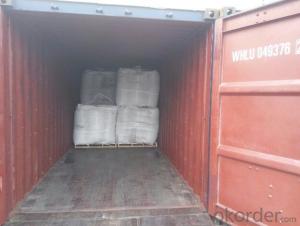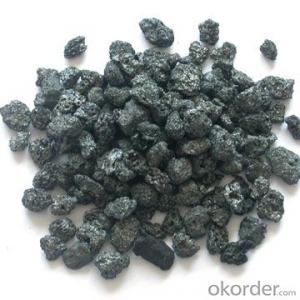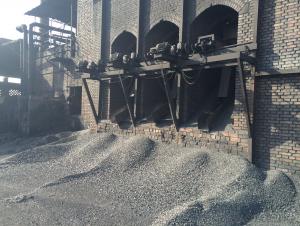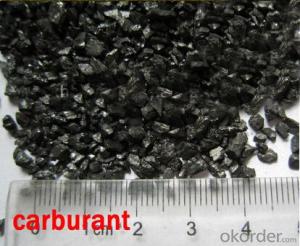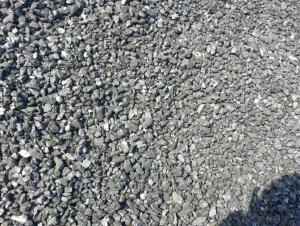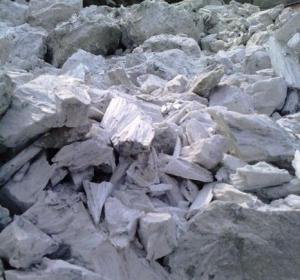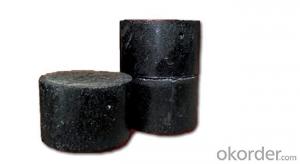Foundry Coke for Foundry Plant with ash 0.8%max
- Loading Port:
- Fuzhou
- Payment Terms:
- TT OR LC
- Min Order Qty:
- 21.6
- Supply Capability:
- 1016 m.t./month
OKorder Service Pledge
OKorder Financial Service
You Might Also Like
Brief Introduction
Foundry Coke is the main fuel of melting iron in the oven. It can melt the materials in the over, make the iron reach great heat, and keep good air permeability by sustain stock column. Thus, the foundry coke should have the characteristics of big block, low reactivity, small porocity, enough anti-crush strengh, low ash and low sulphur.
The coke handled by our cooperation is made from superior coking coal of Shanxi province. Provided with the advantages of low ash, low sulphur and high carbon. Our coke is well sold in European, American, Japanese and South-east Asian markets. Our owned Coke plant are located in Shanxi Province and supplying of you many kinds of coke. We are serving the world
we supply Foundry Coke long-term, its characteristic is best strength, low sulfur and phosphorus,thermal stability.
Specifications:
ASH % | 8% max | 10% max | 12% max |
V.M.% MAX | 1.5% max | 1.5% max | 2% max |
SULFUR % | 0.65% max | 0.65% max | 0.7% max |
MOISTURE | 5% max | 5% max | 5% max |
Size | 80mm-120mm,80-150,100-150mm, or as request | ||
Features
1. Our quality is always quite good and stable which is producing and packing according to customers' requirements.
2. Putting Client profile into first, achieved mutual benefit.
3. Good partner on business. It's a good and wise choice for customers' to purchase from us. It's our great honor to cooperate with you. It is more -widely used around the world
4. We can supply documents as follows:
- bill of loading,
-Invoice,
-Packing List
-Insurance
-standard inspection pictures of the container as specified by INSPECTORATE
-or more requested by buyer.
Pictures
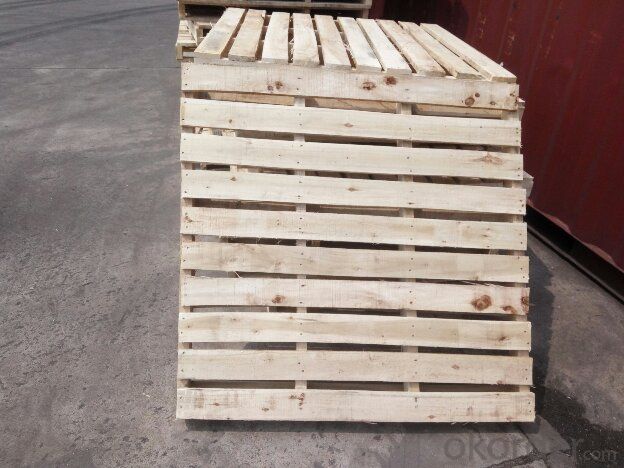
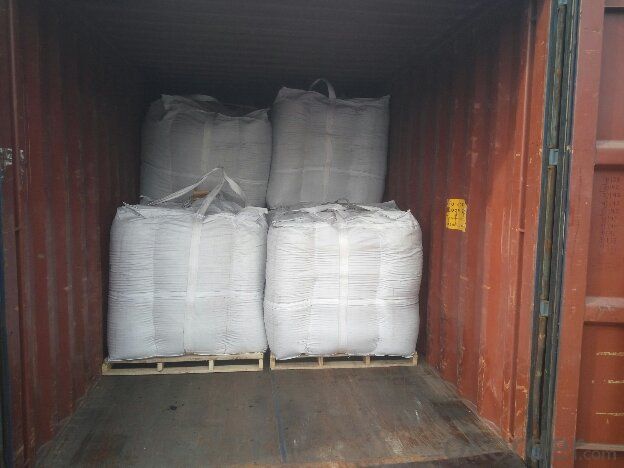
FAQ
1. What is the packing?
In 25kg bag/ In jumbo bags without pallet/ Two jumbo bags with one pallet/ or as customers’ request
2. What is the production capacity?
10 thousand tons per month
3 What is payment term?
Irrevocable LC at sight/ 20% down payment by T/T and 80% against BL copy byT/T/ or to be discussed
4 What is the service?
We will send sample to the third party(CIQ, CCIC, SGS,BV or to be discussed) for checking, and present the test certificate and loading repot of shipment.
- Q:What are the properties of carbon nanotubes?
- Cylindrical structures made entirely of carbon atoms are known as carbon nanotubes. They possess a distinct set of properties that make them highly sought after in various fields of science and technology. Some of the notable properties of carbon nanotubes are as follows: 1. Remarkable strength and stiffness: Carbon nanotubes have an exceptional strength-to-weight ratio, making them one of the strongest materials discovered so far. They are approximately 100 times stronger than steel, yet significantly lighter. This characteristic renders them suitable for applications requiring lightweight materials with high strength. 2. Excellent electrical conductivity: Carbon nanotubes exhibit excellent electrical conductivity, enabling efficient flow of electrical current. They can be utilized as conductive components in diverse electronic devices, including transistors, sensors, and energy storage systems. 3. Efficient thermal conductivity: Carbon nanotubes possess high thermal conductivity, allowing efficient heat transfer. This property makes them ideal for applications requiring effective dissipation of heat, such as thermal management in electronic devices. 4. Flexibility and resilience: Carbon nanotubes are highly flexible and can endure substantial deformation without fracturing. They can be bent and twisted without compromising their structural integrity, making them suitable for applications demanding flexibility, such as flexible electronics. 5. Unique optical and mechanical properties: Carbon nanotubes possess distinctive optical properties that vary depending on their structure and arrangement. They can absorb and emit light across a wide range of wavelengths, making them valuable in applications like photodetectors and solar cells. Additionally, their mechanical properties, including elastic deformation, contribute to their usefulness in applications requiring shock absorption and impact resistance. 6. Chemical stability: Carbon nanotubes exhibit high chemical stability, enabling them to resist degradation or corrosion when exposed to different chemical environments. This characteristic makes them suitable for applications in harsh conditions or as protective coatings. 7. Large aspect ratio: Carbon nanotubes possess a high aspect ratio, with lengths often exceeding thousands of times their diameter. This characteristic allows them to form robust and lightweight composite materials when integrated into a matrix, enhancing the overall strength and stiffness of the composite. In conclusion, the combination of properties displayed by carbon nanotubes makes them an intriguing and versatile material with enormous potential in various applications, including electronics, aerospace, medicine, and energy storage.
- Q:What are the impacts of carbon emissions on the stability of deserts?
- Carbon emissions have significant impacts on the stability of deserts. One of the key consequences is the exacerbation of desertification, which refers to the process of fertile land turning into desert due to various factors, including climate change. Carbon emissions contribute to global warming, leading to higher temperatures and increased evaporation rates, which in turn result in reduced soil moisture and increased aridity in desert regions. This intensifies the process of desertification, causing deserts to expand and become more unstable. Furthermore, carbon emissions contribute to the alteration of precipitation patterns, which directly affects the stability of deserts. As climate change leads to shifts in weather patterns, some areas may experience reduced rainfall, while others may face more frequent and intense droughts. These changes in precipitation can further exacerbate desertification processes and lead to increased desert instability. Another impact of carbon emissions on desert stability is the increased frequency and intensity of dust storms. As global warming leads to drier conditions and reduced vegetation cover, the risk of dust storms becomes higher. These storms can transport vast amounts of fine particulate matter, including dust and sand, over long distances, resulting in a range of negative consequences. Dust storms can damage infrastructure, harm human health, degrade air quality, and further contribute to desertification processes by removing fertile topsoil. Additionally, the impacts of carbon emissions on deserts are not limited to their ecological stability but also have socio-economic implications. Many communities in desert regions rely on agriculture and natural resources for their livelihoods. The destabilization of deserts due to carbon emissions can lead to reduced agricultural productivity, increased food insecurity, and economic hardship for these communities. Moreover, the displacement of people from desert regions due to desertification can lead to increased migration and social instability. In conclusion, carbon emissions have far-reaching impacts on the stability of deserts. They contribute to the intensification of desertification processes, alter precipitation patterns, increase the frequency and intensity of dust storms, and have socio-economic consequences. Addressing carbon emissions through climate change mitigation strategies is crucial to minimize these impacts and ensure the long-term stability of desert ecosystems and the communities that depend on them.
- Q:In Japanese, what's the difference between adding "carbon" and "sauce" after the name?
- Because this is similar to children's pronunciation is very cute, so sometimes good relationship between young people will use "carbon" pronunciation to install cute. So God, many animation or dramas in long sometimes "XX carbon ~" said.
- Q:How does carbon impact the structure and function of ecosystems?
- Carbon plays a crucial role in shaping the structure and function of ecosystems. It is a fundamental building block of life and is involved in various biological processes. Carbon is the primary component of organic matter, such as plants, animals, and microorganisms, which form the basis of food webs and provide energy to other organisms. Carbon dioxide (CO2) is also an essential greenhouse gas that regulates the Earth's temperature. Through photosynthesis, plants absorb CO2 from the atmosphere and convert it into organic carbon compounds, releasing oxygen as a byproduct. This process not only fuels the growth of plants but also maintains the balance of atmospheric gases, supporting life on Earth. Additionally, carbon influences the cycling of nutrients within ecosystems. Decomposition of organic matter by decomposers releases carbon back into the environment, enabling its reuse by other organisms. This carbon cycling is vital for nutrient availability and contributes to the overall productivity of ecosystems. However, human activities, such as burning fossil fuels and deforestation, have significantly increased carbon dioxide levels in the atmosphere. This excess carbon disrupts the natural balance, leading to climate change and its associated impacts on ecosystems. Rising temperatures, altered precipitation patterns, and ocean acidification are some of the consequences of increased carbon emissions, which can negatively affect the structure and function of ecosystems, including biodiversity loss, habitat degradation, and disrupted ecological interactions. In summary, carbon is essential for the structure and function of ecosystems. Its involvement in energy transfer, nutrient cycling, and climate regulation highlights its significance in maintaining ecological balance. However, the excessive release of carbon dioxide by human activities has detrimental effects on ecosystems, emphasizing the need for sustainable practices to mitigate these impacts.
- Q:What is the role of carbon in the human body?
- Carbon plays a crucial role in the human body as it is a fundamental element for all organic molecules. It is the backbone of many biomolecules, including carbohydrates, lipids, proteins, and nucleic acids, which are essential for various physiological processes. Firstly, carbon is a key component of carbohydrates, which are the primary source of energy for the body. Glucose, a simple sugar composed of carbon, hydrogen, and oxygen, is broken down in cells to release energy through cellular respiration. Additionally, carbon forms the structure of complex carbohydrates like glycogen, which is stored in the liver and muscles as an energy reserve. Secondly, carbon is present in lipids, such as fats and oils, which serve as an energy source, insulation, and protection for organs. Carbon atoms are arranged in long hydrocarbon chains, making lipids hydrophobic and allowing them to store and release energy efficiently. Lipids also play a crucial role in cell membrane structure and hormone production. Furthermore, carbon is a fundamental component of proteins, which are involved in almost all cellular processes. Proteins are composed of amino acids, and carbon atoms form the backbone of these amino acids, providing stability and flexibility to the protein structure. Carbon also participates in the formation of peptide bonds, which link amino acids together to build proteins. Proteins are essential for various functions, including enzyme catalysis, transport and storage of molecules, immune response, and cell signaling. Lastly, carbon is a vital element in nucleic acids, such as DNA and RNA, which contain genetic information. Carbon atoms form the sugar-phosphate backbone of nucleic acids, providing stability to the structure. DNA carries hereditary information, while RNA plays a crucial role in protein synthesis. In summary, carbon is essential in the human body as it forms the basis of organic molecules like carbohydrates, lipids, proteins, and nucleic acids. Its versatility and ability to form stable bonds allow for the diverse functions and structures necessary for life processes.
- Q:What are the different types of carbon-based composites?
- There are several different types of carbon-based composites, including carbon fiber reinforced polymers (CFRP), carbon nanotube composites, carbon nanofiber composites, and graphene composites.
- Q:But their chemical symbols are different, so they are different elements, different substances, but they feel the same thing... Tangled up ~!
- The difference is that one of the similarities is that the appearance is black. However, the lead section is metallic luster. Carbon density is very small, about 2G per cubic centimeter, lead density is great, the density is more than 10g per cubic centimeter. Carbon is a nonmetal that can be converted into diamond. Lead is a kind of metal. Carbon is a chemically stable substance at normal temperature. Without poison, activated carbon can be used as a gas mask. Lead is a heavy metal that is harmful to humans. The chemical properties are more lively and can be used as lead batteries. The melting point of lead is very low, only a few Baidu, and the melting point of carbon can reach more than 3000 degrees. Edison made the filament out of carbon. You know that?.
- Q:Which is better, 13 and 14 carbon breath tests?
- The following is the range of feesC14- carbon 14 breath test, each province Price Bureau regulations are different, 95-120 yuanC13- carbon 13 breath test, 150-220 yuan
- Q:What is the concept of carbon neutrality?
- The concept of carbon neutrality refers to the goal of achieving a balance between the amount of carbon dioxide emissions released into the atmosphere and the amount of carbon dioxide removed from the atmosphere. It is an approach to combatting climate change and reducing greenhouse gas emissions by aiming to offset the carbon footprint of an individual, organization, or even an entire country. To achieve carbon neutrality, one must first measure and understand the amount of carbon dioxide emissions being generated. This includes assessing emissions from various sources such as energy production, transportation, agriculture, and industrial processes. Once the emissions are quantified, efforts are made to reduce these emissions through energy efficiency, transitioning to renewable energy sources, and implementing sustainable practices. However, not all emissions can be eliminated entirely. In such cases, carbon offset projects are utilized to neutralize the remaining emissions. These projects involve activities that remove carbon dioxide from the atmosphere, such as reforestation, afforestation, or investing in renewable energy projects. By supporting these initiatives, carbon neutrality can be achieved by balancing the emissions produced with carbon removal or reduction efforts. The concept of carbon neutrality is crucial in the fight against climate change as it acknowledges the responsibility of individuals, organizations, and governments to take action in reducing their impact on the environment. By striving for carbon neutrality, we can effectively contribute to mitigating climate change and creating a more sustainable future.
- Q:How does carbon affect the formation of droughts?
- Carbon dioxide (CO2) and other greenhouse gases play a significant role in the formation of droughts. The increase in carbon emissions from human activities, such as burning fossil fuels and deforestation, has led to a rise in atmospheric CO2 concentrations. This increase in CO2 acts as a heat-trapping blanket, causing the Earth's average temperature to rise, a phenomenon known as global warming. Global warming intensifies the hydrological cycle, which is the process of evaporation, condensation, and precipitation that regulates the availability of water on Earth. As the atmosphere becomes warmer, evaporation rates increase, leading to more moisture being stored in the air. This increased moisture content can result in more intense rainfall events and potentially severe storms in certain regions. However, while there may be an increase in extreme rainfall events, global warming also leads to a reduction in overall precipitation in many areas. Higher temperatures cause increased evaporation from soil, lakes, and rivers, which depletes available water sources. As a result, droughts become more frequent and severe. Additionally, the warming climate alters the patterns of atmospheric circulation, such as the jet stream, which influences weather systems. These changes can result in shifts in precipitation patterns, causing more regions to experience prolonged dry spells and exacerbating the risk of drought. Furthermore, the impacts of carbon emissions and global warming extend beyond the direct effects on precipitation. Rising temperatures also accelerate the rate of evapotranspiration, the process by which water is transferred from the land to the atmosphere through evaporation from the soil and transpiration from plants. This increased evapotranspiration leads to higher water demand from vegetation and crops, which can further contribute to water scarcity and drought conditions. In conclusion, carbon emissions and the resulting global warming significantly affect the formation of droughts. The rise in CO2 concentrations traps heat in the atmosphere, leading to increased evaporation rates, altered atmospheric circulation, and shifts in precipitation patterns. These factors, combined with higher rates of evapotranspiration, result in more frequent and severe droughts. Addressing carbon emissions and mitigating climate change are crucial steps in reducing the risk and impact of droughts in the future.
1. Manufacturer Overview |
|
|---|---|
| Location | |
| Year Established | |
| Annual Output Value | |
| Main Markets | |
| Company Certifications | |
2. Manufacturer Certificates |
|
|---|---|
| a) Certification Name | |
| Range | |
| Reference | |
| Validity Period | |
3. Manufacturer Capability |
|
|---|---|
| a)Trade Capacity | |
| Nearest Port | |
| Export Percentage | |
| No.of Employees in Trade Department | |
| Language Spoken: | |
| b)Factory Information | |
| Factory Size: | |
| No. of Production Lines | |
| Contract Manufacturing | |
| Product Price Range | |
Send your message to us
Foundry Coke for Foundry Plant with ash 0.8%max
- Loading Port:
- Fuzhou
- Payment Terms:
- TT OR LC
- Min Order Qty:
- 21.6
- Supply Capability:
- 1016 m.t./month
OKorder Service Pledge
OKorder Financial Service
Similar products
New products
Hot products
Hot Searches
Related keywords
